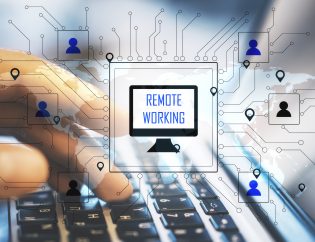The pandemic has forced many changes on the way we work. From widespread remote working to an increased focus on employee health and wellbeing, the new post-pandemic workplace is vastly different from what came before. And these trends are only going to continue as we move forward.
In this blog post, we'll take a look at 5 of the biggest trends that are driving the new post-pandemic workplace. We'll also offer some tips for employers who want to stay ahead of the curve and meet the expectations of their employees. Stay tuned – it's going to be an exciting few years!
Digital Transformation
The first trend that we're seeing in the post-pandemic workplace is an acceleration of digitization efforts.
With so many remote workers, companies are focused on improving their cybersecurity and making sure their systems are up to date.
With so many remote workers, companies are focused on improving their cybersecurity and making sure their systems are up to date. This is a trend that was already underway pre-pandemic, but it's now being accelerated at a rapid pace.
Some digital transformation efforts that have become the new norm are video conference technology, automation software, AI-based tools, and online collaborative tools. We're also seeing a move towards cloud-based storage and applications. And with 5G networks being rolled out across the globe, we can expect even more innovative new technologies to enter the workplace in the coming years.
Flexible Working Arrangements
The second trend is an increased focus on flexible working arrangements. With more and more employees working from home, there's been a shift in mindset when it comes to work-life balance.
Employers are starting to realize that their employees need and value flexibility, and they're beginning to offer more flexible working arrangements like remote and hybrid models as a result.
This trend is only going to continue in the post-pandemic workplace, so employers need to be prepared to offer greater flexibility when it comes to hours, location, and job types.
Read more: How To Create A Successful Hybrid Employee Work Model: Tips For Employers
Increased Expectation of Privacy
The third trend we're seeing is an increased expectation of privacy from employees. With so many people now working from home, they're used to having more control over their environment and they don't want to give that up when they return to the office. This means that employers need to be more mindful of employee privacy, both in terms of physical space and data security.
Data security is a particularly important concern in the post-pandemic workplace. With more and more companies digitizing their operations, there's an increased risk of data breaches. So employers need to make sure they have robust cybersecurity measures in place to protect their employees' data and their job satisfaction.
Employee Health and Wellbeing
The fourth trend we're seeing is an increased focus on employee health and wellbeing. This is something that's always been important, but it's taken on new significance in the post-pandemic world.
With so many employees working remotely, employers need to find new ways to support their mental and physical health, especially in regard to the impacts of the pandemic when workers were isolated, sick and even lost loved ones.
There are a number of ways employers can support employee experience, health, and well-being in the post-pandemic workplace. These include offering mental health support, providing wellness benefits, and promoting a healthy work-life balance.
Read more: The Return to In-Office Work: Benefits and Advice for Employers Making the Transition
The Rise of the Gig Economy
The final trend we're seeing is the rise of the gig economy. With so many workers now looking for greater flexibility, there's been a boom in the gig economy. This is an economy where people work independently, often on a short-term or freelance basis.
The gig economy is growing rapidly, and it's expected to continue to do so in the post-pandemic world. This presents both opportunities and challenges for employers. On one hand, the gig economy can provide employers with a ready supply of talent for short-term or project-based work. On the other hand, it can also have negative effects on companies with a more fragmented workforce and increased competition for talent.
These are just a few of the trends we're seeing in the new post-pandemic workplace. As you can see, there's a lot of change happening, and employers need to be prepared to adapt to these changes. If you want to stay ahead of the curve, you need to be aware of these trends and start planning how you'll address them in your own workplace.
Looking for more tips on how to navigate the new world of work and hire top talent that will stick around? Our recruiters at firstPRO are here to help your company adapt to a post-pandemic culture and build business strategies for long-term employee retention.









